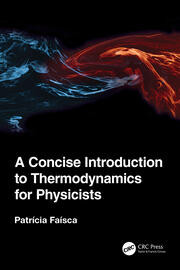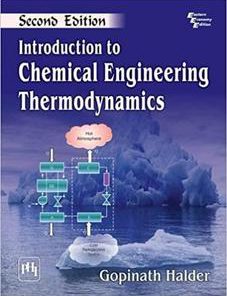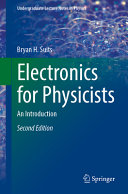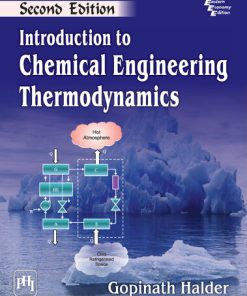A Concise Introduction to Thermodynamics for Physicists 1st Edition by Patricia Faisca ISBN 9781000630060 1000630064
$50.00 Original price was: $50.00.$25.00Current price is: $25.00.
A Concise Introduction to Thermodynamics for Physicists 1st Edition by Patricia Faisca – Ebook PDF Instant Download/Delivery: 9781000630060 ,1000630064
Full download A Concise Introduction to Thermodynamics for Physicists 1st Edition after payment

Product details:
ISBN 10: 1000630064
ISBN 13: 9781000630060
Author: Patricia Faisca
A Concise Introduction to Thermodynamics for Physicists 1st Edition Table of contents:
SECTION I The Laws of Thermodynamics
Chapter 1 Thermodynamics Key Concepts
1.1 Introduction
1.2 Thermodynamic equilibrium
1.3 Thermodynamic system
1.4 The ideal gas
1.5 Internal energy
1.6 Extensive and intensive properties
1.7 Thermodynamic processes
1.8 Constraints and processes
1.9 Heat and heat capacity
1.10 The zeroth law of thermodynamics
1.11 A brief introduction to the kinetic theory of gases
1.11.1 Velocity space
1.11.2 Velocity distribution
1.11.3 Deriving the pressure equation of state
1.12 Learning outcomes
1.13 Worked problems
1.14 Suggested problems
Chapter 2 The First Law
2.1 Introduction
2.2 Thermodynamic work
2.3 The first law of thermodynamics
2.4 Exact differentials and state functions
2.5 Rewriting the first law
2.6 Joule Experiment
2.7 Using the first law
2.7.1 Heat capacity at constant volume
2.7.2 Heat capacity at constant pressure
2.7.3 Isothermal compression and expansion of the ideal gas
2.7.4 Adiabatic compression and expansion of the ideal gas
2.7.5 Thermodynamic cycles
2.8 Learning outcomes
2.9 Worked problems
2.10 Suggested problems
Chapter 3 The Second Law
3.1 Introduction
3.2 The Carnot engine
3.3 The inverted Carnot cycle
3.4 The second law of thermodynamics
3.5 Carnot theorem
3.6 Entropy change in reversible processes
3.7 The fundamental constraint
3.8 Clausius theorem
3.9 Analysis of irreversible processes
3.9.1 Joule expansion
3.9.2 Systems in thermal contact
3.9.3 Mixing two ideal gases
3.10 The statistical meaning of entropy
3.11 Entropy and disorder
3.12 Learning outcomes
3.13 Worked problems
3.14 Suggested problems
Chapter 4 The Third Law
4.1 Introduction
4.2 Nernst theorem
4.3 Maximum cooling
4.4 Nernst unattainability principle
4.5 Logical equivalence between Nernst theorem and the unattainability principle
4.6 Open questions
4.7 The ideal gas near absolute zero
4.8 Learning outcomes
SECTION II The Structure of Thermodynamics
Chapter 5 Thermodynamic Potentials
5.1 Introduction
5.2 Enthalpy
5.3 Free energy
5.3.1 Helmholtz free energy
5.3.2 Gibbs free energy
5.4 Maxwell relations
5.5 Thermodynamic coefficients
5.6 Open systems and chemical potential
5.7 Multicomponent systems
5.8 The grand potential
5.9 Massieu functions
5.10 Thermodynamic equilibrium revisited
5.11 Stability of equilibrium states
5.11.1 Stability and the sign of thermodynamic coefficients
5.11.2 Metastability of equilibrium states
5.12 Learning outcomes
5.13 Worked problems
5.14 Suggested problems
Chapter 6 Thermodynamics of Extensive Systems
6.1 The Euler equation
6.2 The Gibbs-Duhem equation and thermodynamic degrees of freedom
6.3 Applying the Gibbs-Duhem equation
6.4 Molar quantities
6.5 Partial molar quantities
6.6 Learning outcomes
6.7 Worked problems
6.8 Suggested problems
SECTION III Applications
Chapter 7 Phase Transitions
7.1 Introduction
7.2 Phase
7.3 The Gibbs phase rule
7.4 Phase diagrams
7.5 Phase transitions
7.6 Clausius-Clapeyron equation and latent heat
7.7 The van der Waals gas model
7.7.1 Maxwell construction
7.7.2 Critical isotherm and corresponding states
7.8 Guggenheim curve and criticality
7.9 Critical exponents
7.10 Learning outcomes
7.11 Worked problems
7.12 Suggested problems
Chapter 8 Magnetic Systems
8.1 Introduction
8.2 Magnetic work and internal energy
8.3 Thermodynamic potentials for magnetic systems
8.4 Thermodynamic coefficients
8.5 Equations of state
8.5.1 Diamagnetic systems
8.5.2 Paramagnetic systems
8.6 Adiabatic demagnetisation
8.7 Absolute negative temperature
8.8 Learning outcomes
8.9 Worked problems
8.10 Suggested problems
Chapter 9 Thermal Radiation
9.1 Introduction
9.2 Kirchhoff’s law and black body radiation
9.3 Thermodynamics of radiation and the Stefan-Boltzmann law
9.4 Wien’s displacement law and the black body spectrum
9.5 Thermal radiation and astrophysics
9.6 Learning outcomes
9.7 Worked problems
9.8 Suggested problems
Index
People also search for A Concise Introduction to Thermodynamics for Physicists 1st Edition:
what is thermodynamics in physics
thermodynamics physics examples
first law of thermodynamics in physics pdf
introduction to thermal physics pdf
introductory thermodynamics
Tags:
Patricia Faisca,Concise Introduction,Thermodynamics,Physicists
You may also like…
Physics - Quantum Physics
Mathematics - Geometry and Topology
A Concise Introduction to Algebraic Varieties 1st Edition Brian Osserman
Physics - Electricity and Magnetism
Electronics for Physicists An Introduction 2nd Edition Bryan H. Suits
Mathematics - Logic
A Concise Introduction to Logic (14th Edition) by Patrick J. Hurley 9780357798683 0357798686
Computers - Programming
Concise Guide To Databases: A Practical Introduction Konstantinos Domdouzis
Engineering - Chemical Engineering
Introduction to Chemical Engineering Thermodynamics 2nd Edition by Gopinath Halder 9788120348974
Engineering - Chemical Engineering
Introduction to chemical engineering thermodynamics Hendrick C. Van Ness











